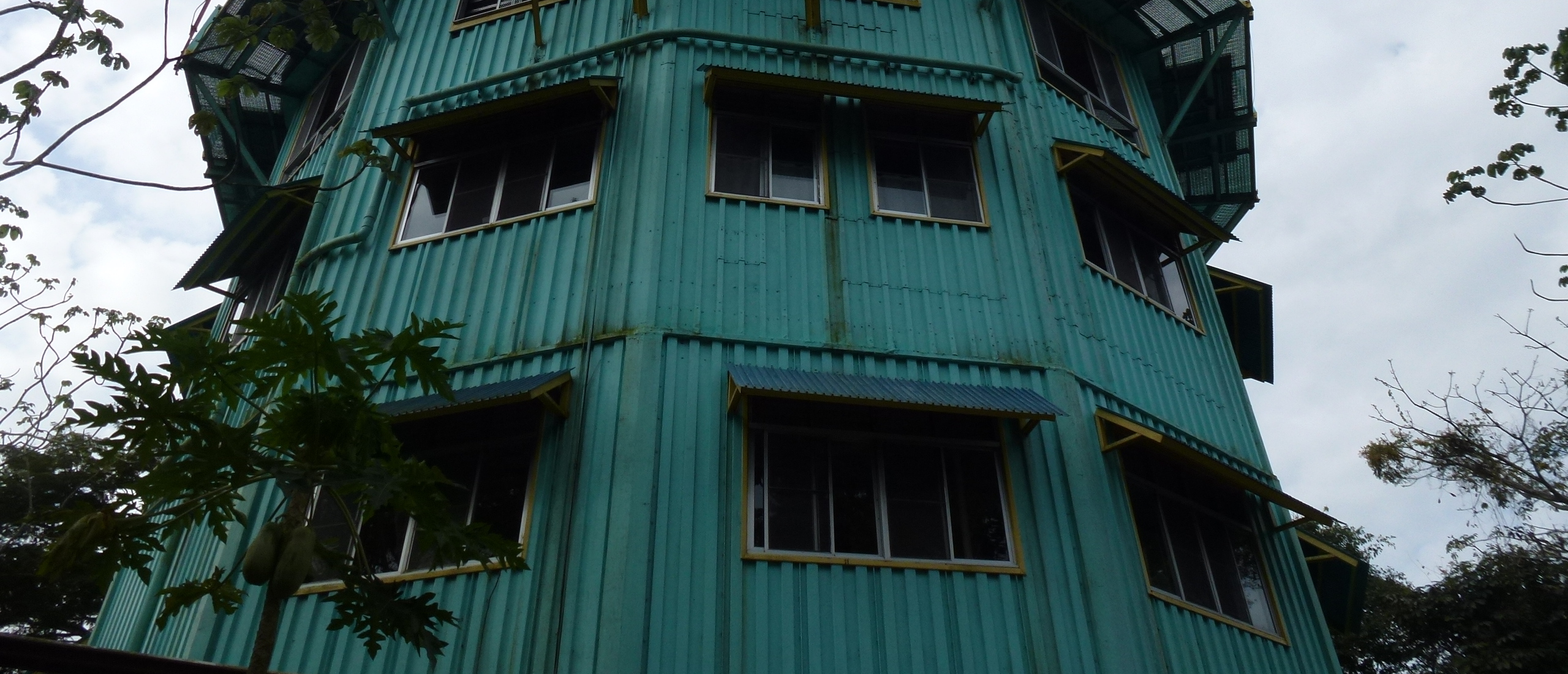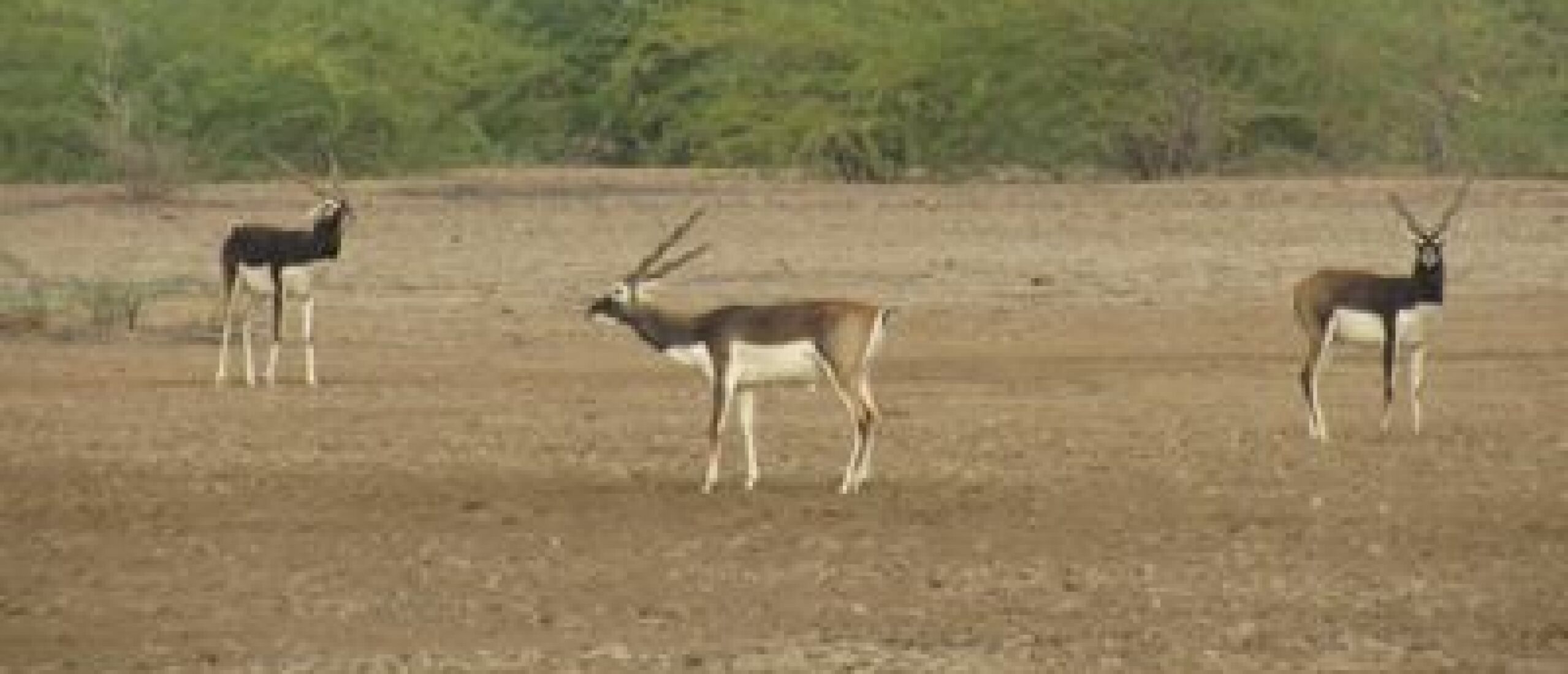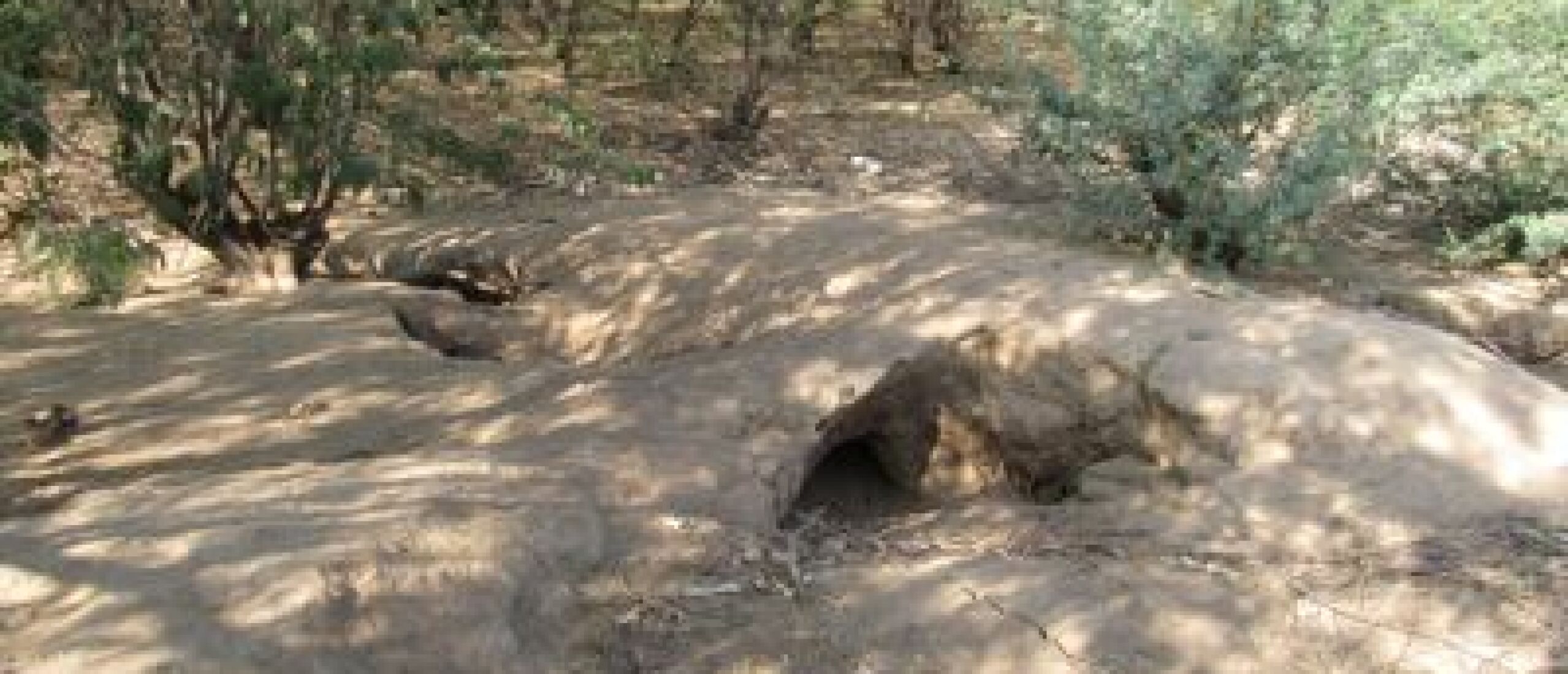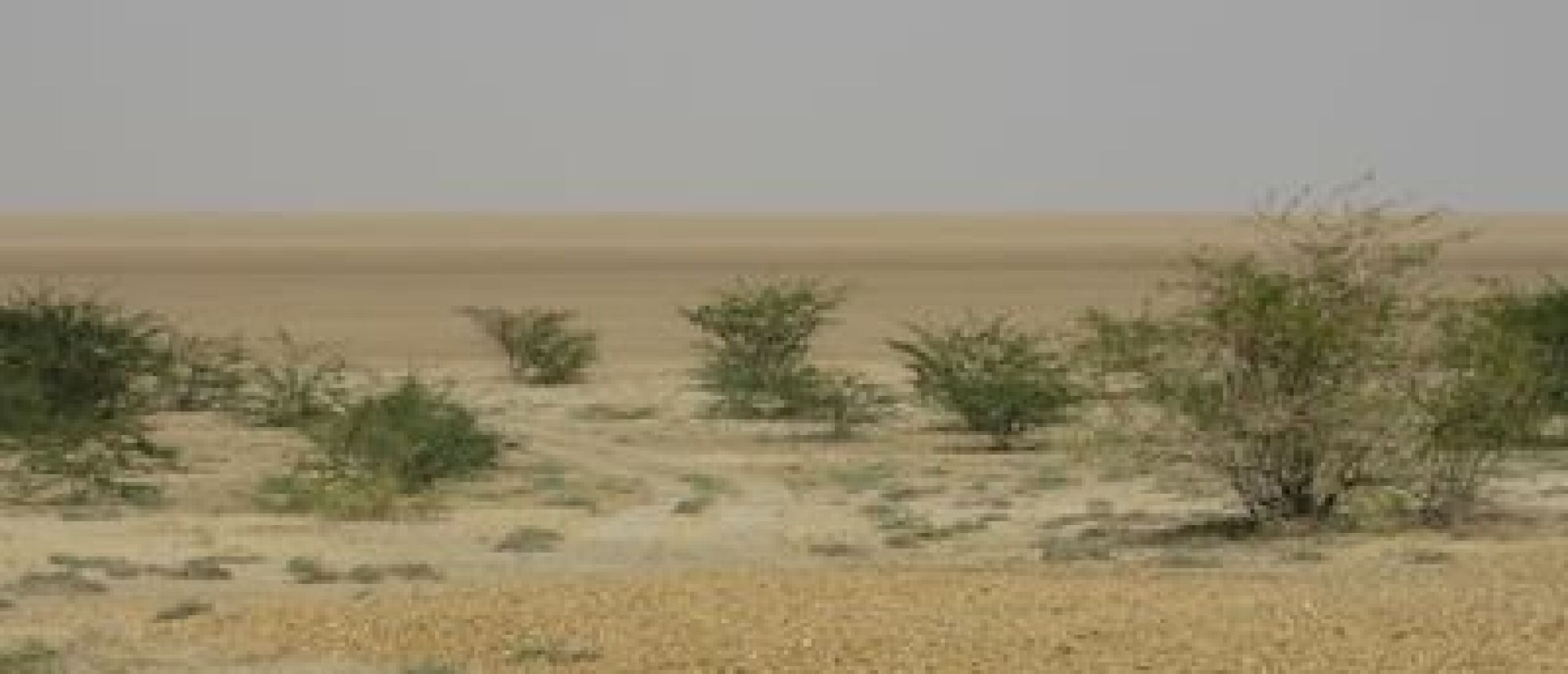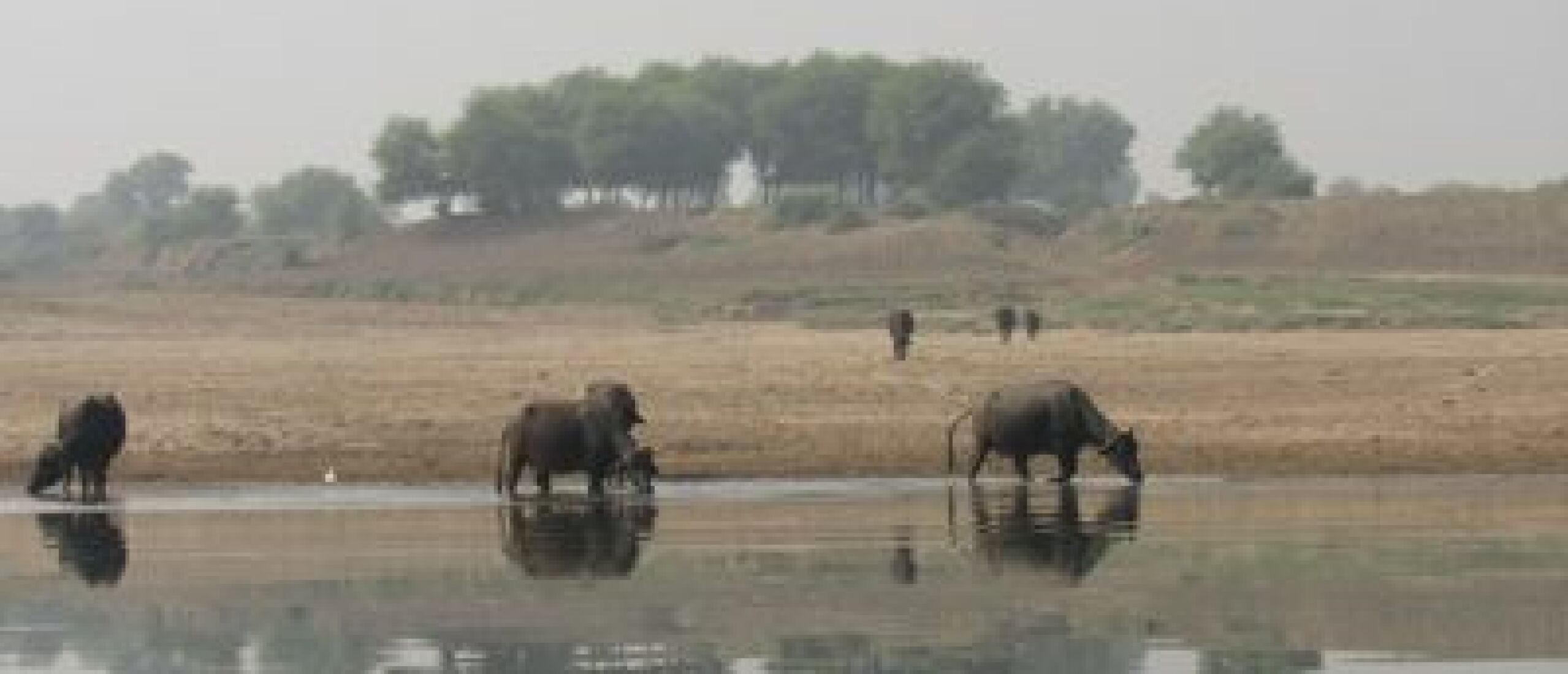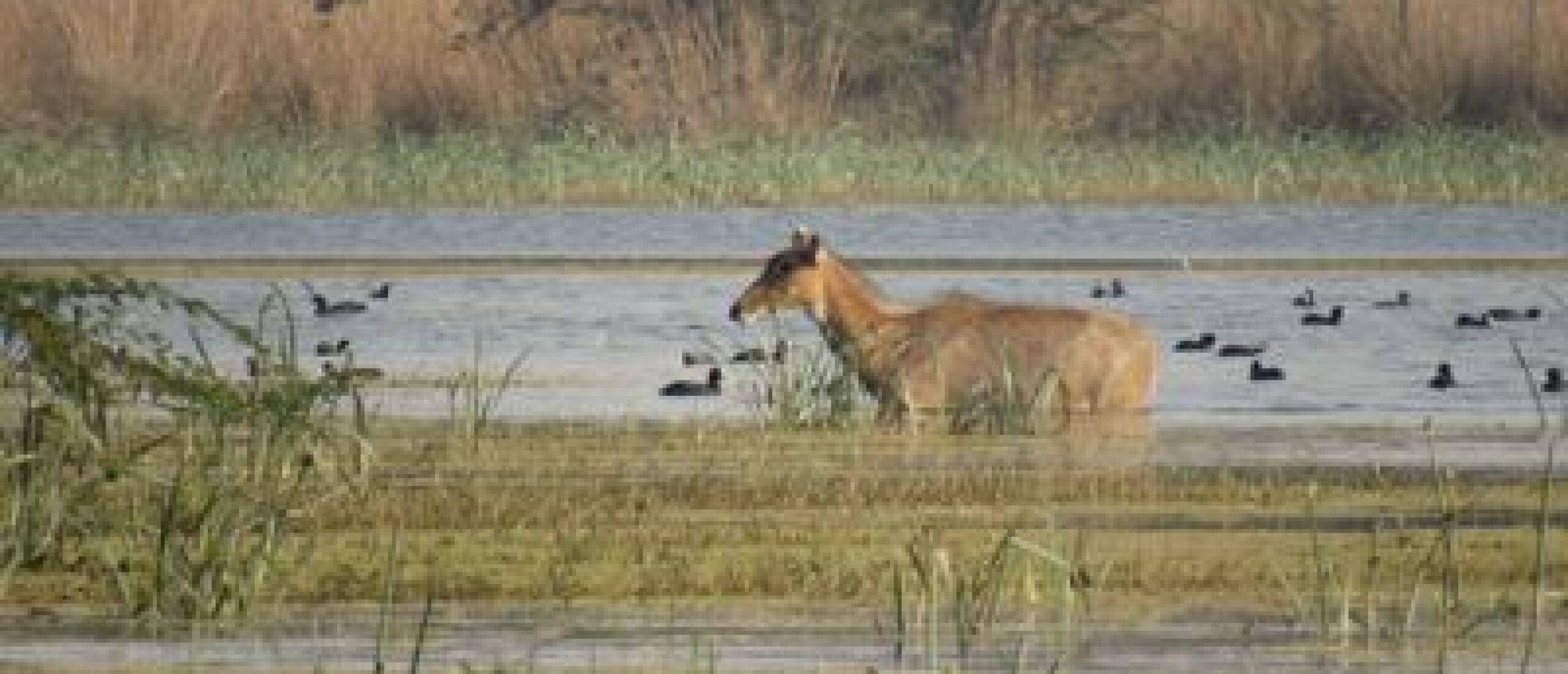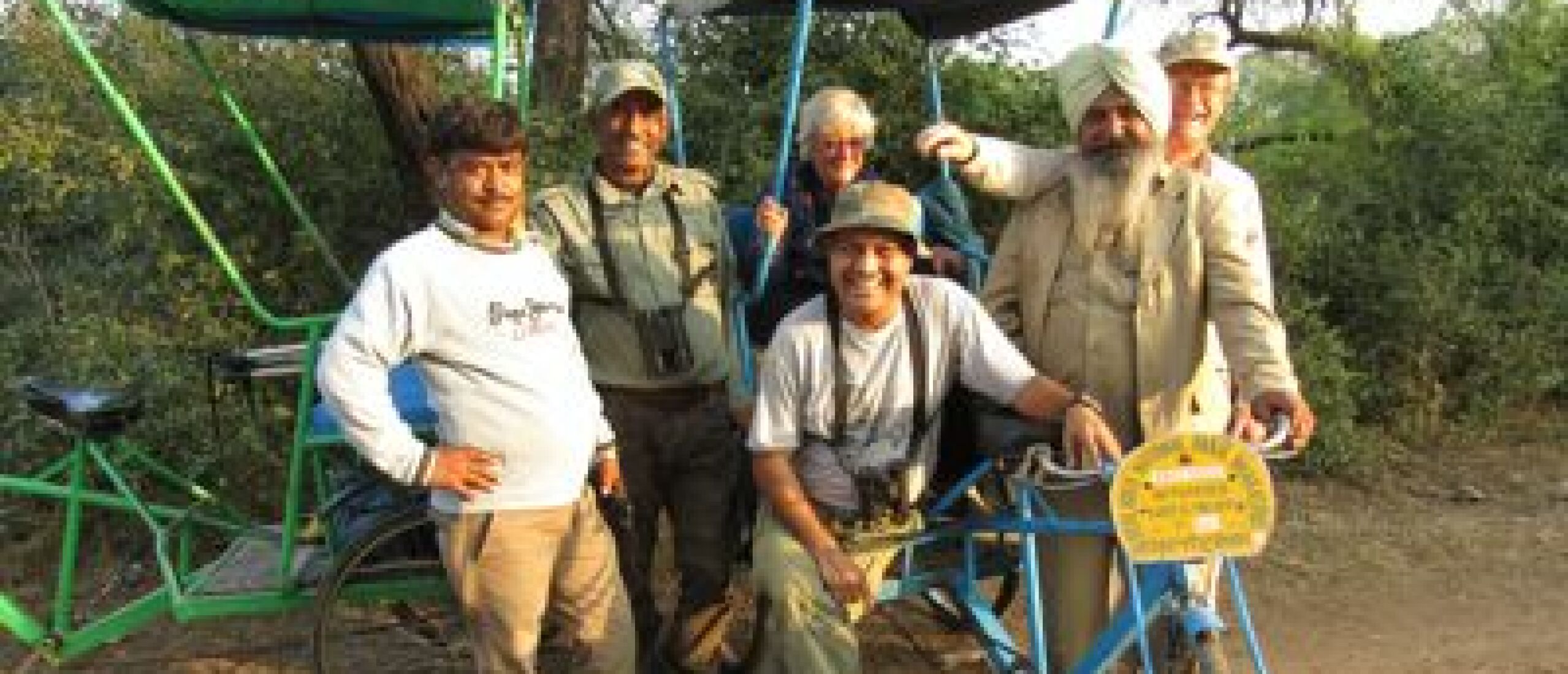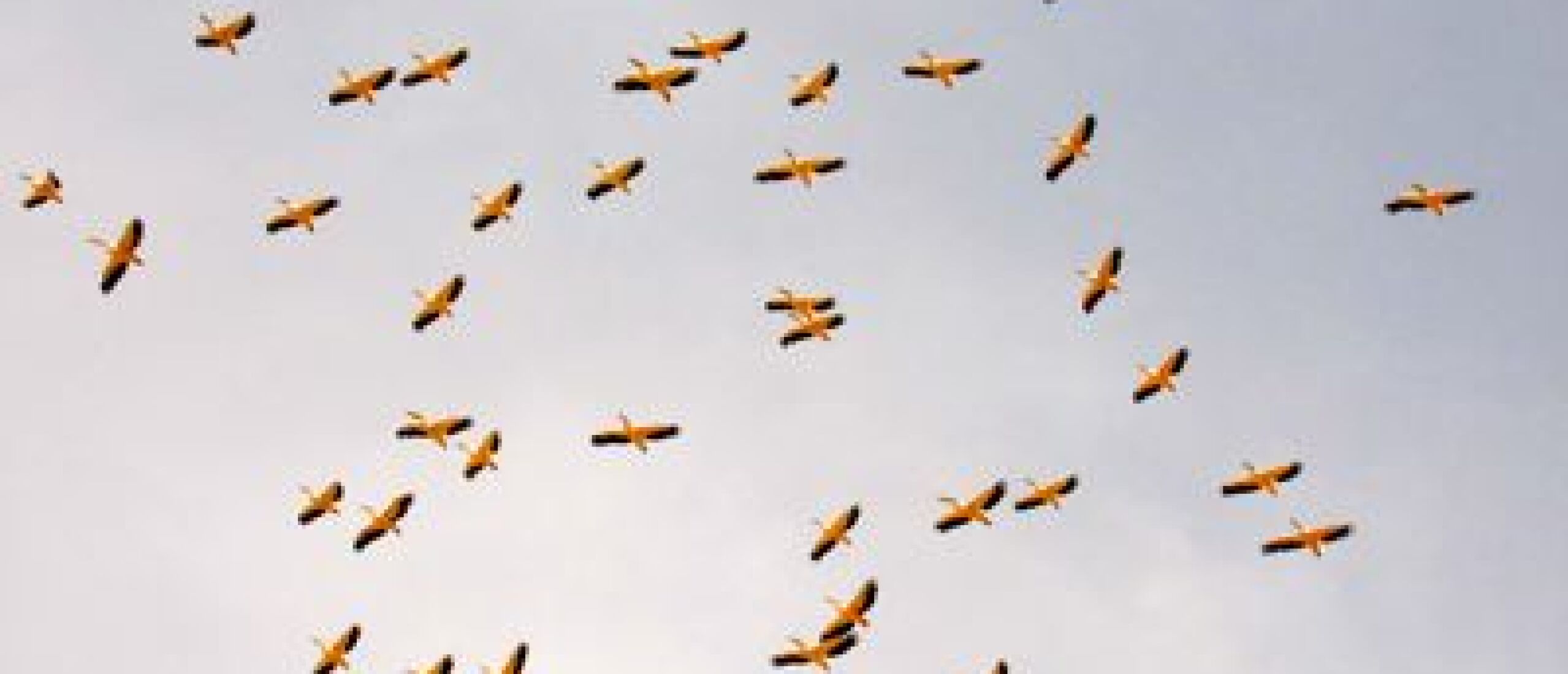
Kutch or Kachchh, that is the question! We have just completed what has been, at least as far as I am concerned, the most successful and enjoyable part of this whole Great Indian Adventure 2015, in the remote Great Rann of Kutch - or is it Kachchh, as earlier scholars had anglicised its spelling (I love the impossible combination of consonants in the early version)? One of my principle aims during this part of the trip is to scout suitable areas for bird tours, which I am aiming to organise in collaboration with Sumantha Ghosh, our friend and fixer from Rural Traveller, and Chris Mills, of Norfolk Birding. Kutch is home to an amazing array of desert and semi-desert birds, many of which have an essentially Middle Eastern distribution and only reach India here in this far-flung western corner, up against the sensitive Pakistan border. Our home for the past few days has been the attractive Cedo (Centre for Desert and Ocean) Birding Lodge, brainchild of Mr Jugal Tiwari, a passionate ecologist and conservationist, who cares deeply not only for the wildlife but also for the local people of this beautiful part of rural Gujarat. Our expert guide has been his brother-in-law, Veer Vaibhav Mishra, who is resident naturalist at this homestay. We could not have been in better hands, and over the coming few days, Veer and I built up a successful bird-finding partnership, and our luck was certainly in as we found almost all the regional specialities, with a few unexpected bonus birds thrown in - and searching for these species with him has been enormous fun too. Our first morning involved a quest to find one of the really key birds of this area, and one that I had long dreamed of seeing, the Grey Hypocolius. This enigmatic species is not closely related to any other bird, although some taxonomists place it with the Waxwings, with which it does share a similarly shaped bill and a liking for berries, but its Middle Eastern distribution and its long tail certainly do not make that relationship immediately obvious. Before setting up Cedo Birding, Mr Tiwari had spent eight years working in the tiny village of Fulai, and during that time he had found that considerable numbers of this extraordinary species regularly wintered close by, attracted by the berries of Salvadora persica, the Toothbrush Tree. When he left the village himself, he passed over the guiding of visiting birders to a local villager, Mohammed, who was waiting for us at the appointed place and time, and we headed into the bushy areas near the village, crossing castor oil fields, checking any birds that perched up on the top of the Salvadora or Acacia bushes, in the hope of finding the elusive Hypocolius. Most of the birds were Bulbuls, and eventually Mohammed went off to search on his own. Perhaps half an hour later, there came a message of success: a Hypocolius had been spotted! Normally birders should probably not run, but in this case I hared across the field, and a few moments later I was feasting my eyes on a lone male Grey Hypocolius, peacefully feeding on the Salvadora berries. I was able to watch it and obtain a few rather distant but recognisable photos before it flew off, luckily passing over Rosemary, who had not made it across the rough ground to our vantage point, but was able to least see it in flight.
 The Grey Hypocolius is a rare bird with a mainly Middle Eastern distribution
The Grey Hypocolius is a rare bird with a mainly Middle Eastern distribution
Delighted with this success, we headed out onto the dried up former seabed that makes up this arid landscape, known as the Great Rann of Kutch. Rann means open and barren place, and the transition from the agricultural land to the semi-desert became clear as we drove on to our breakfast point, the extraordinary basalt rock formation known by Veer as Bird Rocks. Here we were able to admire Desert, Variable and Red-tailed Wheatears while enjoying our delicious breakfast in the first warming rays of morning sunshine. The location was utterly desolate, in the most positive sense of the term, surrounded by the flat expanse of the Great Rann, and wonderfully free of human activity. The sound of hundreds of roosting Cranes flying out from their roosting areas, uttering their evocative bugling cries in the morning sunlight, was an experience to savour.
 The Desert Fox: Rosemary Fox enjoying her breakfast at Bird Rocks
The Desert Fox: Rosemary Fox enjoying her breakfast at Bird Rocks
Not long afterwards, a train of perhaps two hundred camels made its way slowly by, these 'ships of the desert' led by two herdsmen providing a timeless scene as they disappeared gradually into a cloud of dust and haze. Apparently these herds used to cross the White Desert into what is now Pakistan, but the border is now firmly closed and no cross-border trading is tolerated. A random glance up into the deep blue sky revealed a formation of perhaps 150 Great White Pelicans circling in perfect unison, the wind hissing in their flight feathers, eventually becoming clearly audible as they soared over our heads. It seemed strange to see these aquatic birds over the arid desert landscape, but from their elevated position they could clearly see the great wetland of the Chhari Dhand, a seasonal lake that only appears in years when the monsoon rains are sufficient to turn what is otherwise a dry dustbowl into a wetland that teams with life.
 A flock of Great White Pelicans wheeling overhead
A flock of Great White Pelicans wheeling overhead
After adding Isabelline to the three Wheatear species we had already seen, our next target bird was another regional speciality, the Stoliczka's or White-browed Bushchat. Similar to the much commoner Stonechat, but with a bold eye-stripe in the male, we were only able to locate a rather drabber female, but a clearly recognisable one nonetheless, and yet another 'lifer' for me.
 The pale eyebrow of the female Stoliczka's Bushchat is a key feature
The pale eyebrow of the female Stoliczka's Bushchat is a key feature
The afternoon excursion was also to the same area, but also included a visit to the Chhari Dhand, and a tower provided excellent views right across this seasonal lake, on which hundreds of duck, coot and other waterfowl were to be seen. After scanning these flocks, we drove on across the dried mud of the Rann, hoping to find a roost of Short-eared Owls that sometimes appears here. We were unlucky with these, but a wonderful Southern Grey Shrike put in an appearance instead.
 A Southern Grey Shrike gave a grand showing in the evening light
A Southern Grey Shrike gave a grand showing in the evening light
Our tea stop coincided with a splendid sunset across the Chhari Dhand wetland, and the Cranes put on a star performance for us, flighting in against the orange sky in long skeins, bugling as they came.
 The sunset over the wetlands was spectacular
The sunset over the wetlands was spectacular
Despite the gathering darkness, our day's birding was not yet over, as Veer had brought along a powerful spotlight, and as he played the beam across the dried out landscape, it was not long before some eyeshine led us to an outstanding viewing of a Sykes's Nightjar, another Middle Eastern and Pakistani breeding species that winters here in Kutch. The bright light allowed us to admire the cryptic colour pattern of this desert bird, which is paler than its forest-dwelling relatives in order for it to blend in better with the sandy soil it normally rests on during the daytime.
 Sykes's Nightjar is well camouflaged in its desert habitat
Sykes's Nightjar is well camouflaged in its desert habitat
Even then our luck was still with us, as just before we arrived back at our accommodation, a Desert Cat appeared in the headlights of our vehicle, again allowing for clear observation, the spotting on its back and the striped legs distinguishing it from a domestic cat.
 Desert Cat was an unexpected bonus
Desert Cat was an unexpected bonus
As on all serious birding trips, the following morning saw us heading out before dawn, this time in the direction of some native dry thorny Acacia woodland. Our target bird was the endangered White-naped Tit, which is restricted to parts of Rajasthan and Gujarat, and a few isolated areas in South India. Far more boldly marked than the similarly sized Great Tit, this dramatically patterned bird was high on my wish list. Our first stop produced several Common Woodshrikes and a number of Marshall's Ioras, both species that frequently associate with the White-naped Tit, so my hopes were high. A Grey-necked Bunting put in an appearance, yet another new species for my life list, but it was not long before a typically tit-like call drew our attention to a black and white bird perched on the top of a nearby tree - and there was the White-naped Tit. I managed to obtain a number of reasonable photographs and a short video recording of this beautiful bird, and we were all treated to outstanding views over quite a long period.
 The boldly patterned White-naped Tit is a threatened Indian endemic
The boldly patterned White-naped Tit is a threatened Indian endemic
Veer told us that least nine different types of call have been identified for the White-naped Tit, meaning that it has its own 'language' that can be used to express different messages. Sadly, though, this linguistic skill cannot save the bird from habitat loss and replacement of native Acacia forest by agricultural expansion or industrialisation. Long may its ringing calls be heard across these peaceful north-west Indian hillsides, but whether they will remains to be seen.
 A backroad through White-naped Tit habitat
A backroad through White-naped Tit habitat
Indeed, one of the Tit's other calls was heard during our picnic breakfast break. Veer informed us that the birds tend to finish their morning foraging around 09.30 AM, after which they retreat into thicker foliage and roost during the heat of the day before venturing out again in the late afternoon. The call we were hearing at this point must have been one that meant "I'm going for my siesta", and it certainly was coming from deep within the thicker vegetation, and we could not even catch a glimpse of the bird. What we were able to feast our eyes upon, though, was the gorgeously marked Indian Courser, a long-legged bird of open fields with a deep chestnut belly and a bold white eyestripe. Several were feeding in a nearby ploughed field, running short distances on their extraordinary pure white legs (other than the Forktails, I do not know of any other birds that have white legs) before bending forward to pick up some worm or beetle along the furrows.
 The Indian Courser is a beautiful bird
The Indian Courser is a beautiful bird
I will end this blog post here, but our stay in the Great Rann of Kutch was to take an even better turn the following day, with a rare sighting of one India's most magnificent and drastically threatened birds. All will be revealed next time. For now though, I shall take the opportunity to thoroughly recommend Cedo Birding as an outstanding provider of good accommodation and food, as well as fabulous sightings, in this unique and little-known corner of far western India.
 Veer scanning the cliffs for an Eagle Owl, which did not appear
Veer scanning the cliffs for an Eagle Owl, which did not appear


